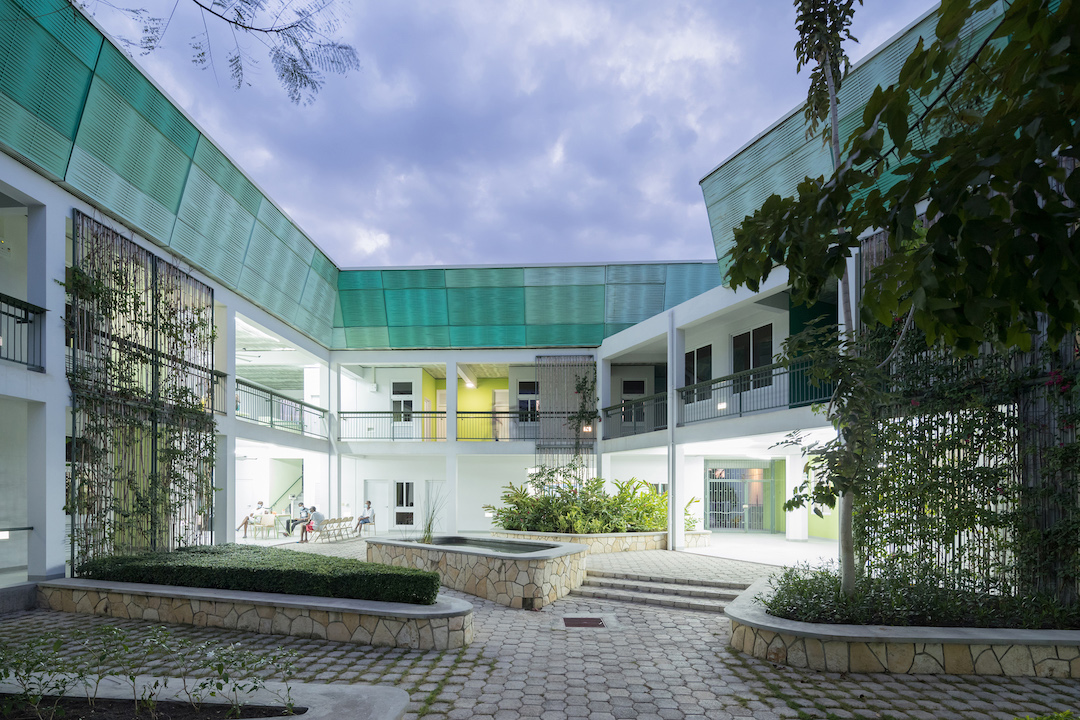The American Institute of Architects (AIA) Academy of Architecture for Health (AAH) named five projects winners of its 2019 Healthcare Design Awards.
The awards recognize cutting-edge designs that help solve aesthetic, civic, urban and social problems while also being functional and sustainable. Recipients can include healthcare building design, healthcare planning, and healthcare design-oriented research.
This year’s projects were awarded by a seven-member jury:
• Marlon Blackwell, FAIA (Chair), Marlon Blackwell Architects, Fayetteville, Arkansas
• Vincent Della Donna, AIA, ACHA, Jackson, New Jersey
• Brian Uyesugi, NBBJ, Seattle, WA
• Sunil Shah, Kaiser Permanente, Oakland, California
• Jim Henry, AIA, CallisonRTKL, Dallas, TX
• Jocelyn Stroupe, CannonDesign, Chicago, IL
• James Childress, FAIA, Centerbrook Architects, Centerbrook, Connecticut
The 2019 Healthcare Design Award winners are (project descriptions and images courtesy AIA):
Category A - Built: Less than $25 million (construction cost)
The GHESKIO Tuberculosis Hospital, Port-au-Prince, Haiti | MASS Design Group
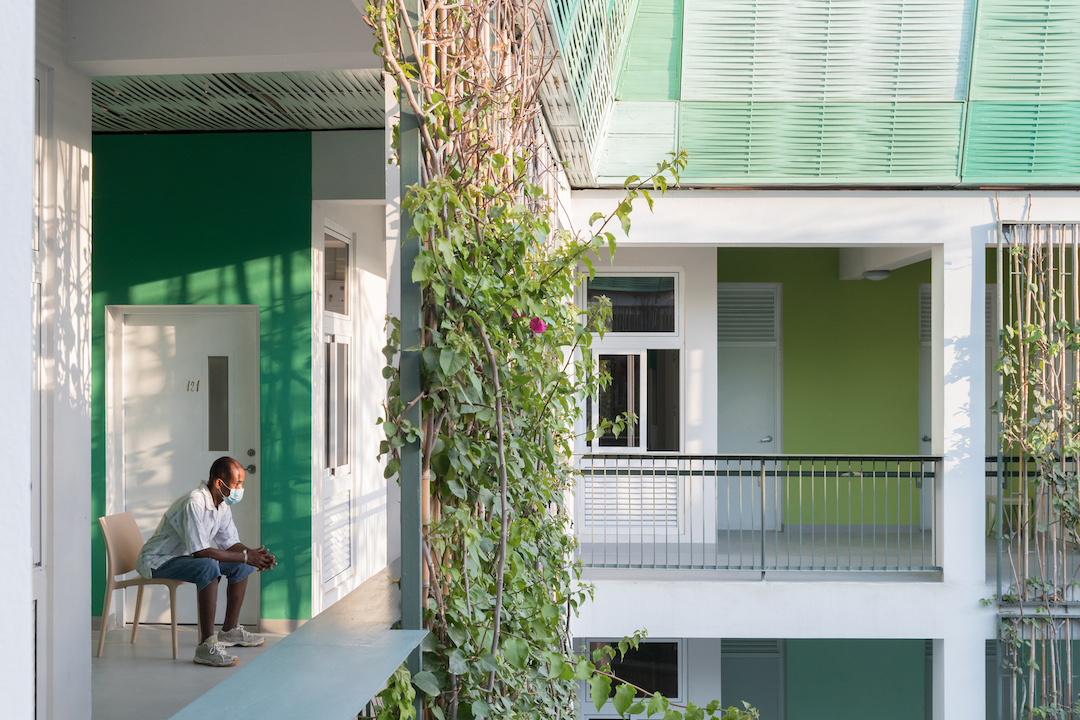 Photo: Iwan Baan, www.iwan.com, courtesy AIA
Photo: Iwan Baan, www.iwan.com, courtesy AIA
The earthquake that hit Port-au-Prince in 2010 exacerbated Haiti’s already high prevalence of tuberculosis by destroying the country’s health infrastructure and interrupting patient treatments. This precipitated an outbreak of Multi-Drug Resistant Tuberculosis (MDR-TB), a highly contagious disease that requires treatment lasting up to 24 months. Patients remain infectious for the first 2-6 months of their treatment regimen, during which time they need to be hospitalized in isolation to prevent the spread of the disease.
Both infection control and patient trauma—from extended seclusion and because of the severe side effects of medication (which can include blindness, deafness, and emotional instability)—were driving factors in the design of the Tuberculosis Hospital for Les Centres GHESKIO. The new GHESKIO Tuberculosis Hospital replaced the previously destroyed facility at Signeau, providing TB patients an effective and dignified place to stay for the duration of their long-term treatment. Simple but effective methods of passive ventilation and infection control were used to reduce in-hospital transmission of TB in this high-risk population, as well as reduce energy costs for the facility.
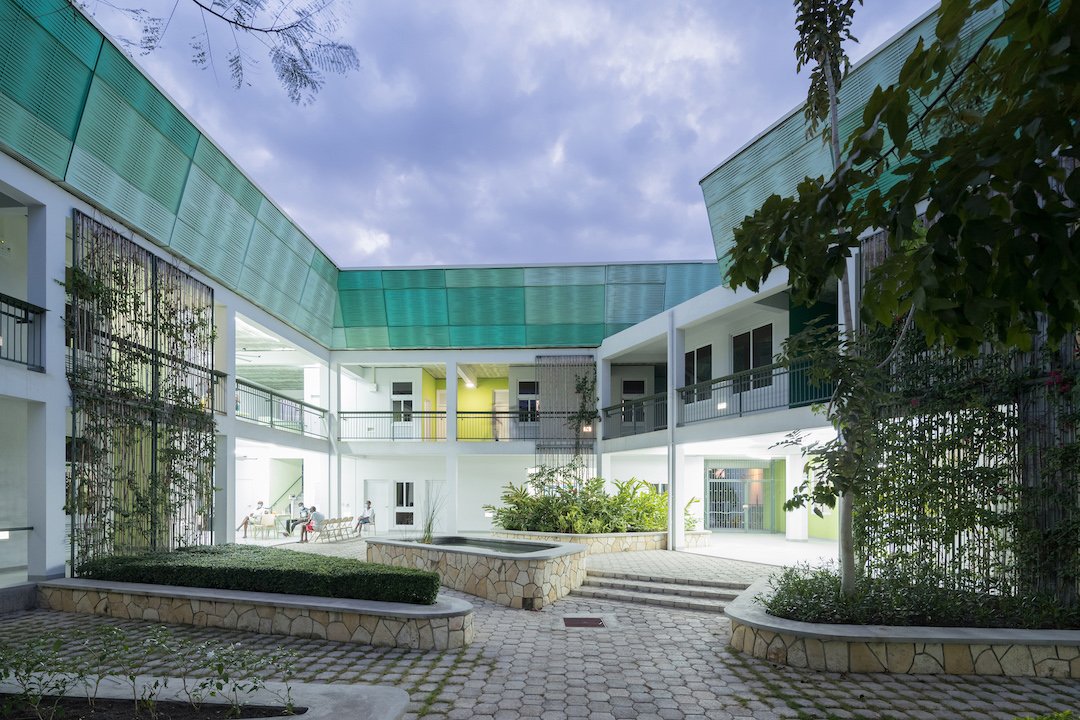 Photo: Iwan Baan, www.iwan.com, courtesy AIA
Photo: Iwan Baan, www.iwan.com, courtesy AIA
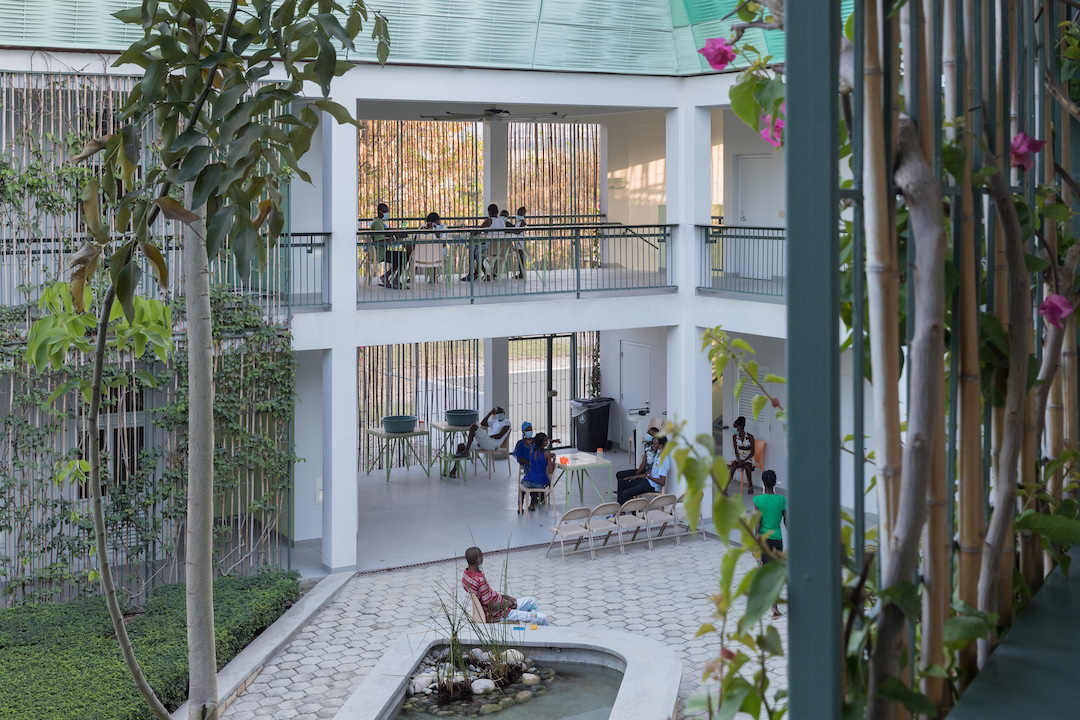 Photo: Iwan Baan, www.iwan.com, courtesy AIA
Photo: Iwan Baan, www.iwan.com, courtesy AIA
Project attributes
Construction cost or anticipated construction cost: $2 million
Building area or anticipated building area: 14,000 sq ft
Construction start date or anticipated construction start date: June 2012
Substantial completion date or anticipated substantial completion date: March 2015
Project team
Construction Manager: GBS Group
Engineer -Civil: Fall Creek Engineering
Engineer - M/E: Berelec
Engineer - Structural: CBI Consulting
General Contractor: Chantiers d’Haiti
Landscape Architect: MASS Design Group
Landscape Consultants: Jardins & Accessoires
Westlake Dermatology Concrete and Glass Pavilion, Marble Falls, Texas | Matt Fajkus Architecture
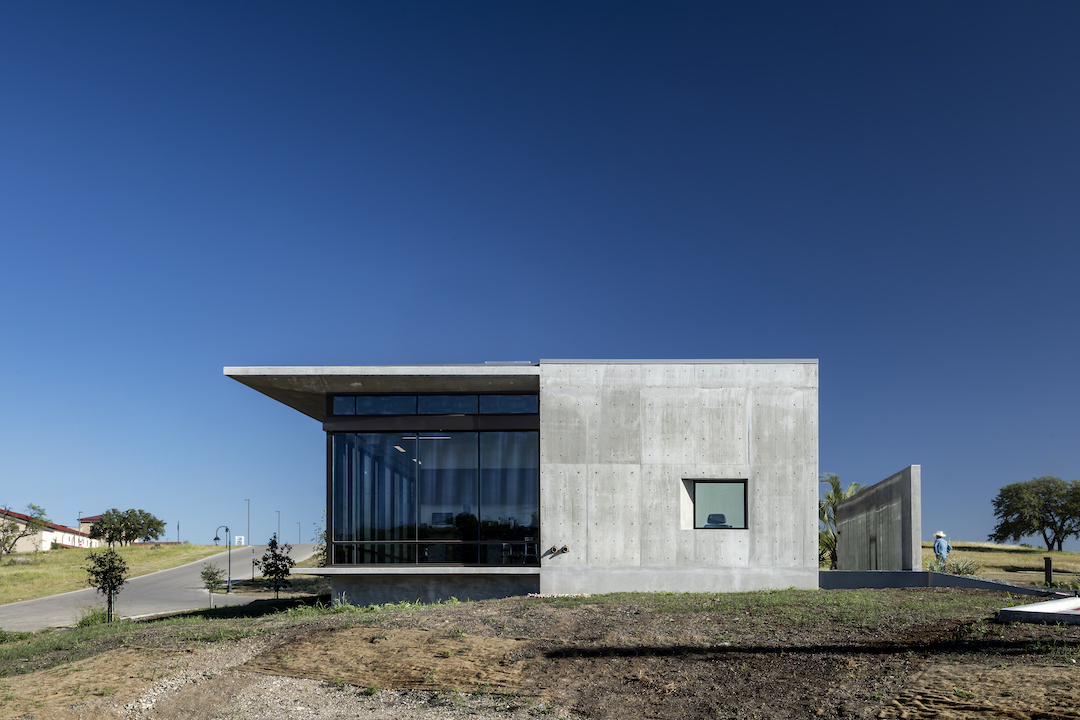 Photo: Charles Davis Smith, courtesy AIA
Photo: Charles Davis Smith, courtesy AIA
The Westlake Dermatology building stands out as a timeless frame in the rolling landscape, rather than appearing clinical or sterile. The medical and cosmetic dermatology practice was founded by Dr. Nikolaidis who believes great design serves as an inspiration for aesthetics. The facility in Marble Falls was a ground-up design project strengthened by a collaborative process directly with the clients and consultants. From a distance, the structure is a pavilion in the landscape, standing as a structure to behold in and of itself, but from in and round the building, it acts as deferential backdrop to function and as a frame for views beyond.
The nuanced concrete and glass shell merges with the designed landscape architecture, enveloping the bright and open interior in calm and quiet as one transitions from the road, through a garden zone, and into the space overlooking the rolling hills. Patient care and comfort are priorities – both influencing the design to embody feeling of security, ease, and solidity. Calibrated detail along with careful material selection result in a soothing and refreshing environment that is considerate of spatial and sensory experiences.
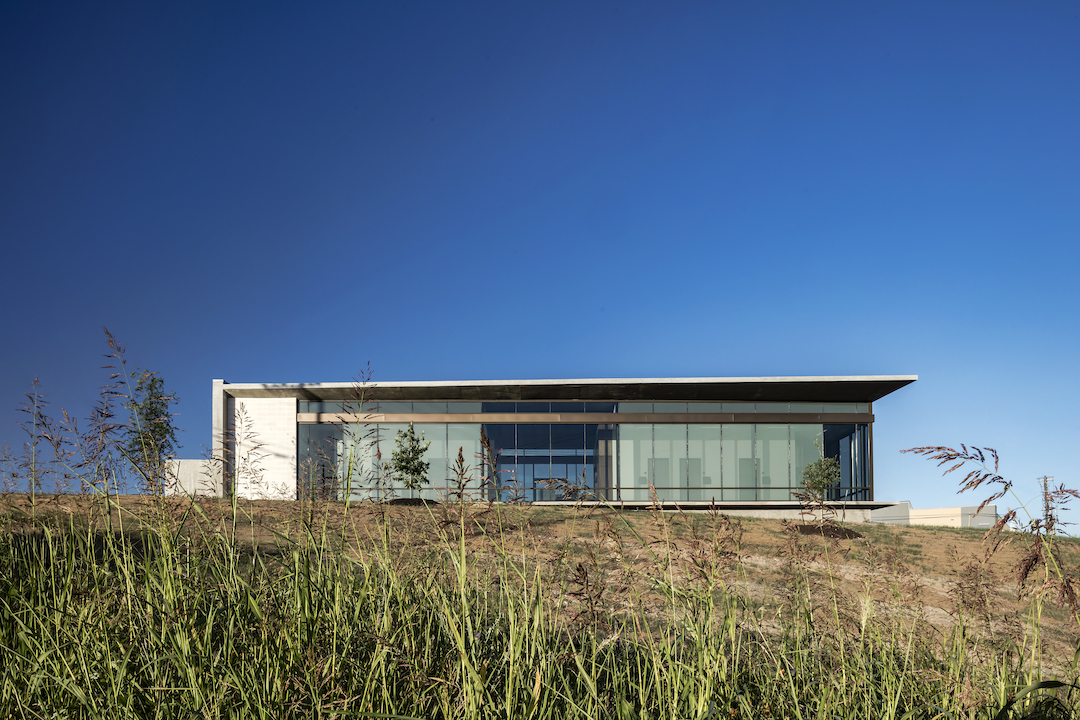 Photo: Charles Davis Smith, courtesy AIA
Photo: Charles Davis Smith, courtesy AIA
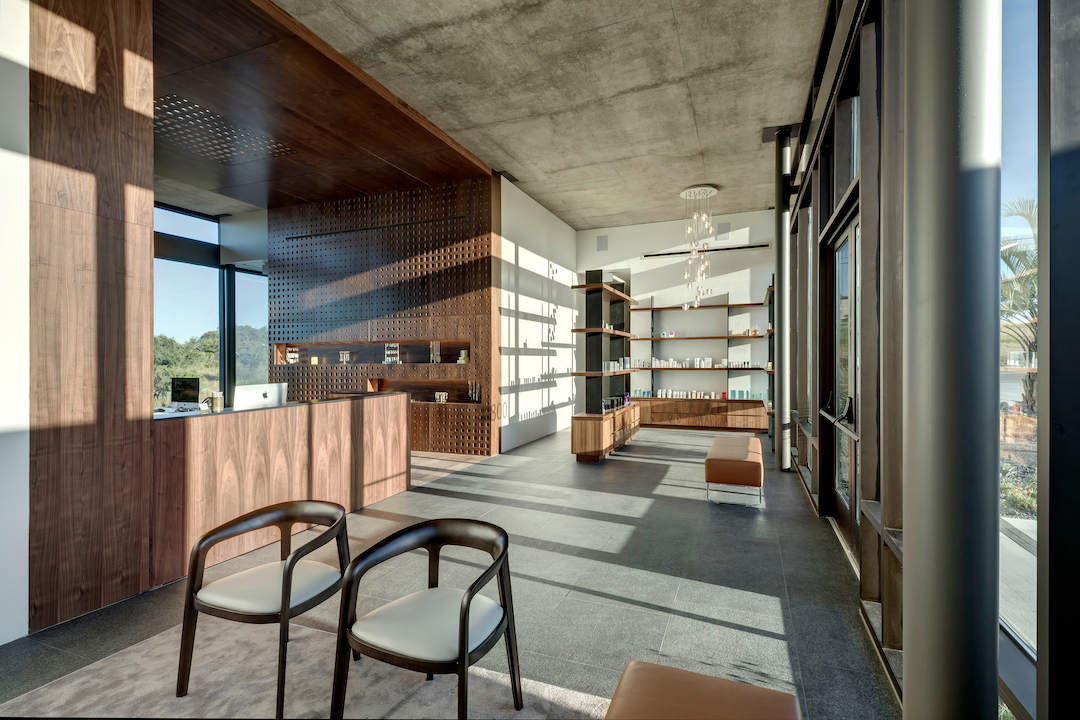 Photo: Charles Davis Smith, courtesy AIA
Photo: Charles Davis Smith, courtesy AIA
Project attributes
Construction cost or anticipated construction cost: $1.8 million
Building area or anticipated building area: 3,000 sq ft
Construction start date or anticipated construction start date: April 2016
Substantial completion date or anticipated substantial completion date: May 2017
Project team
Engineer - Civil: LJA Engineering
Engineer - MEP: DBR Engineering Consultants
Engineer - Structural: MJ Structures
Furniture Selection: Allison Burke Interior Design
General Contractor: Zapalac Reed
Landscape Architect: Eden Garden Design
Category B - Built: More than $25 million (construction cost)
Casey House, Toronto, Canada | Hariri Pontarini Architects
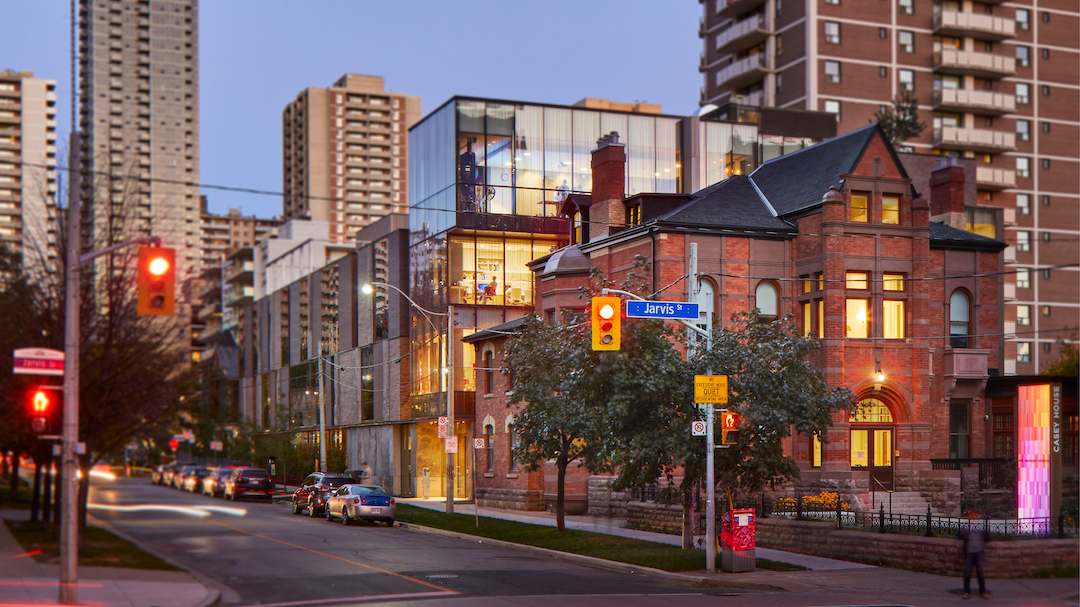 Photo: Doublespace Photography, courtesy AIA
Photo: Doublespace Photography, courtesy AIA
The renovation and extension to Casey House, a specialized healthcare facility for individuals living with HIV/AIDS, develops a new prototype for hospitals. The facility meets the needs of patients in a setting designed to evoke the experience and comforts of home. In order to create a comfortable, home-like user experience, the embrace emerged as a unifying theme—one of warmth, intimacy, comfort, privacy, connectivity, and solidity. The architecture is a physical manifestation of the embrace. The extension reaches over and around the existing heritage designated building, which has been restored, while the new addition—a robust, textured exterior— surrounds the central courtyard. The landscaped courtyard is visible from every corridor and in-patient room and, given the private nature of the facility, provides protected outdoor space.
Once inside, the experience is about engagement of the old and new, and the organization—the embrace—around the courtyard, which is the ever-present symbol of life-affirming green, water, and light (trees, fountain, and sunlight). The living room, the central gathering space, featuring a two-story atrium, is anchored by a full-height fireplace crafted from Algonquin Limestone. A bridge connects the heritage and new spaces on the second floor with long views stretching from end to end.
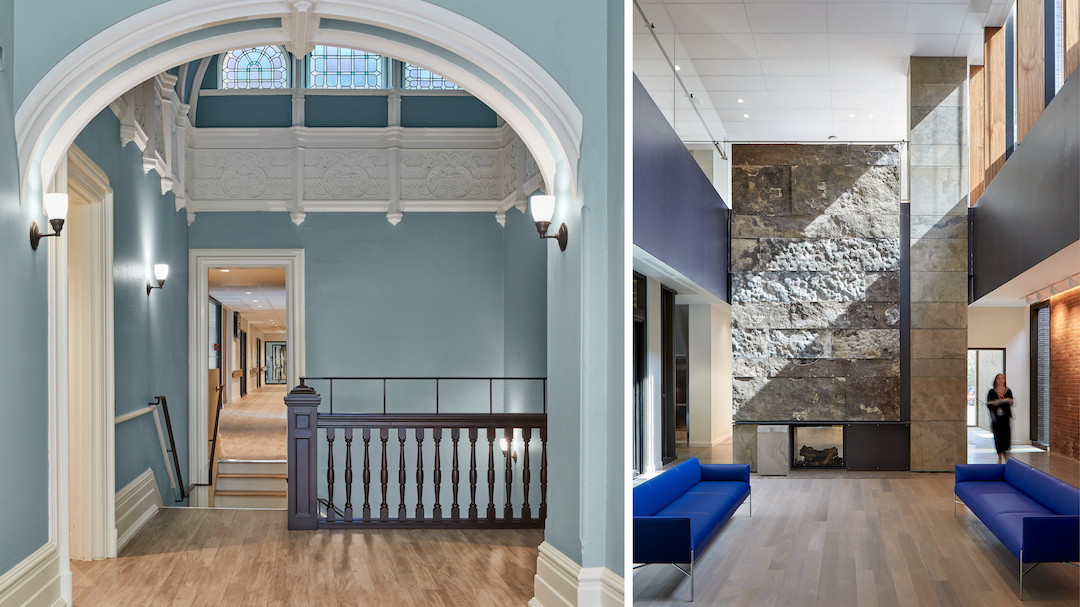 Photo: Doublespace Photography, courtesy AIA
Photo: Doublespace Photography, courtesy AIA
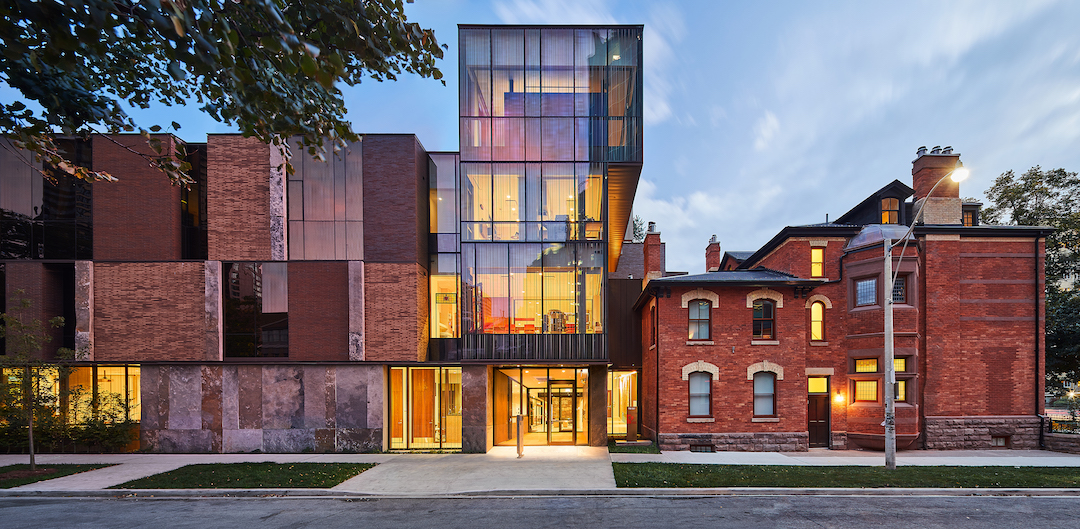 Photo: Doublespace Photography, courtesy AIA
Photo: Doublespace Photography, courtesy AIA
Project attributes
Construction cost or anticipated construction cost: $30 million
Building area or anticipated building area: 59,000 sq ft
Construction start date or anticipated construction start date: March 2015
Substantial completion date or anticipated substantial completion date: September 2017
Project team
Acoustics: Swallow
Code Consultant: David Hine Engineering
Engineer - ME: WSP Canada
Engineer - Structural: Entuitive
Food Service: Kaizen Foodservice Planning
Heritage Consultant: ERA Architects
Landscape Architect: Mark Hartley Landscape Architect
Security: Mulvey & Banani
The U.S. Department of Veterans Affairs Palo Alto (VAPA) Polytrauma and Blind Rehabilitation Center, Palo Alto, California | SmithGroup and The Design Partnership LLP
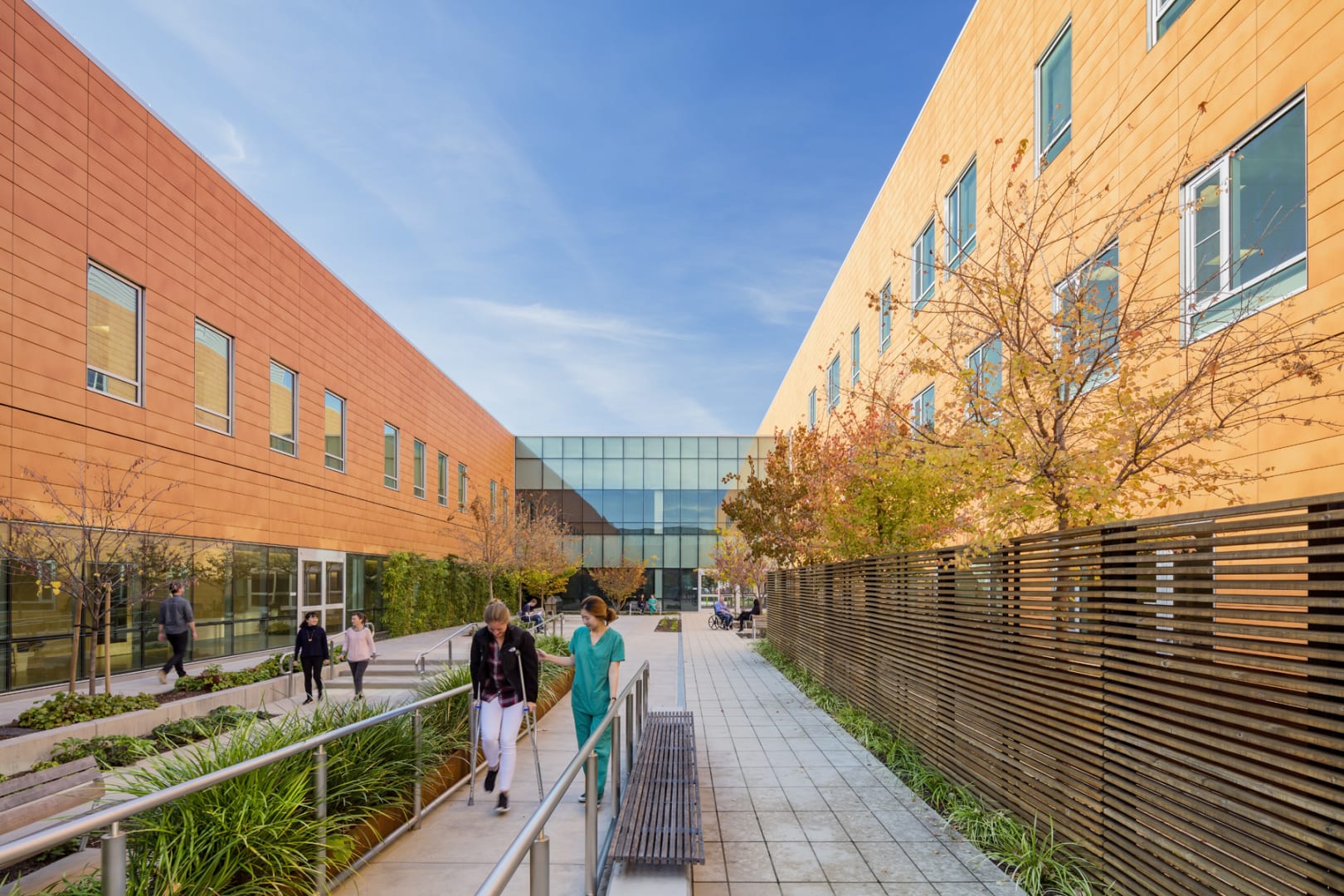 Photo: Tim Griffith and Kyle Jeffers, courtesy AIA
Photo: Tim Griffith and Kyle Jeffers, courtesy AIA
The new VA Palo Alto (VAPA) Polytrauma and Blind Rehabilitation Center is one of only five polytrauma centers in the country designed specifically to serve and enhance the patient rehabilitation experience of polytrauma, blind and visually impaired veterans. At 174,000 square feet, it is not only the largest federal rehabilitation facility but also the only center to house polytrauma and blind rehabilitation services under one roof.
The Center’s impactful approach to healing through design—where the environment itself is a tool for rehabilitation—provided the design team provided the team with multiple opportunities to improve the patient experience by designing for our senses—touch, movement, smell, taste, sight, hearing and balance. The evaluation of each design element against these human sensory metrics resulted in a more immersive and healing space for patients, staff and visitors alike. The Polytrauma and Blind Rehabilitation Center exemplifies equity by design—minimizing barriers that patients face to maximize the potential for successful rehabilitation. The design integrates the latest advances in accessibility, universal design, and rehabilitation practices, resulting in a healthcare facility that aims to not only enhance patient recovery during their rehabilitation journey but long after.
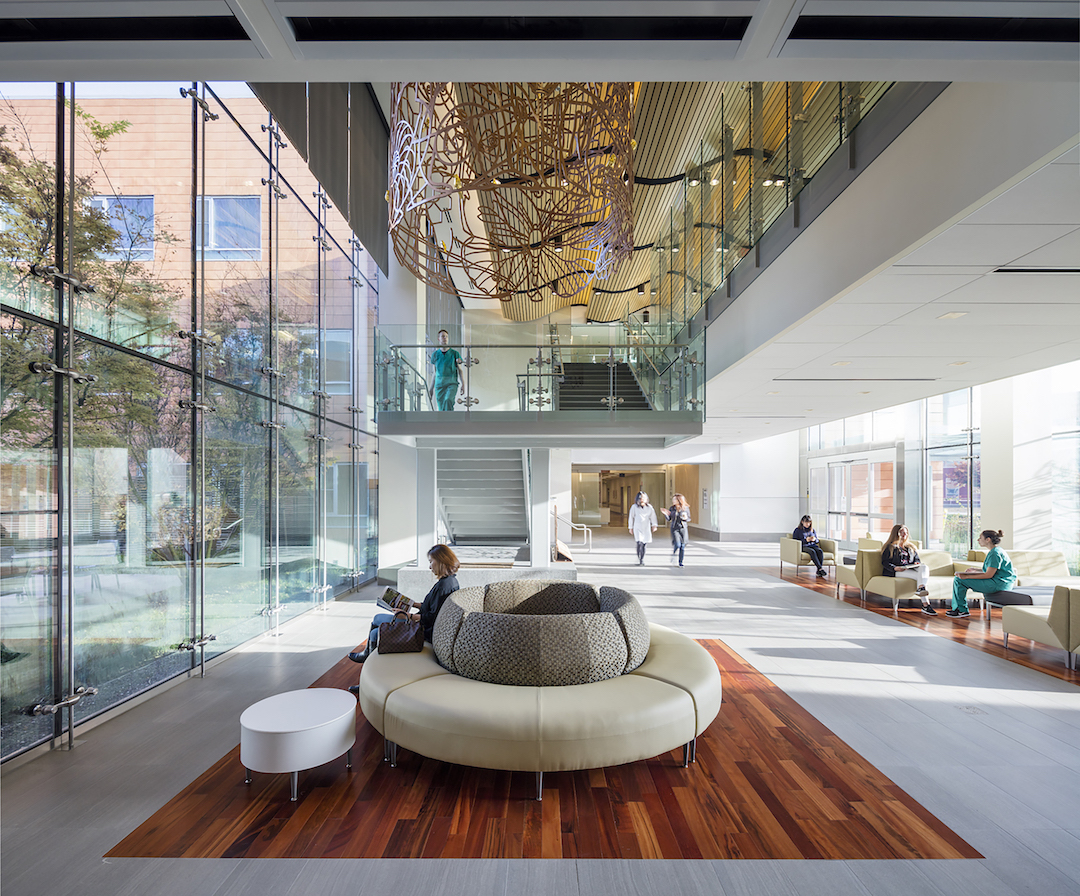 Photo: Tim Griffith and Kyle Jeffers, courtesy AIA
Photo: Tim Griffith and Kyle Jeffers, courtesy AIA
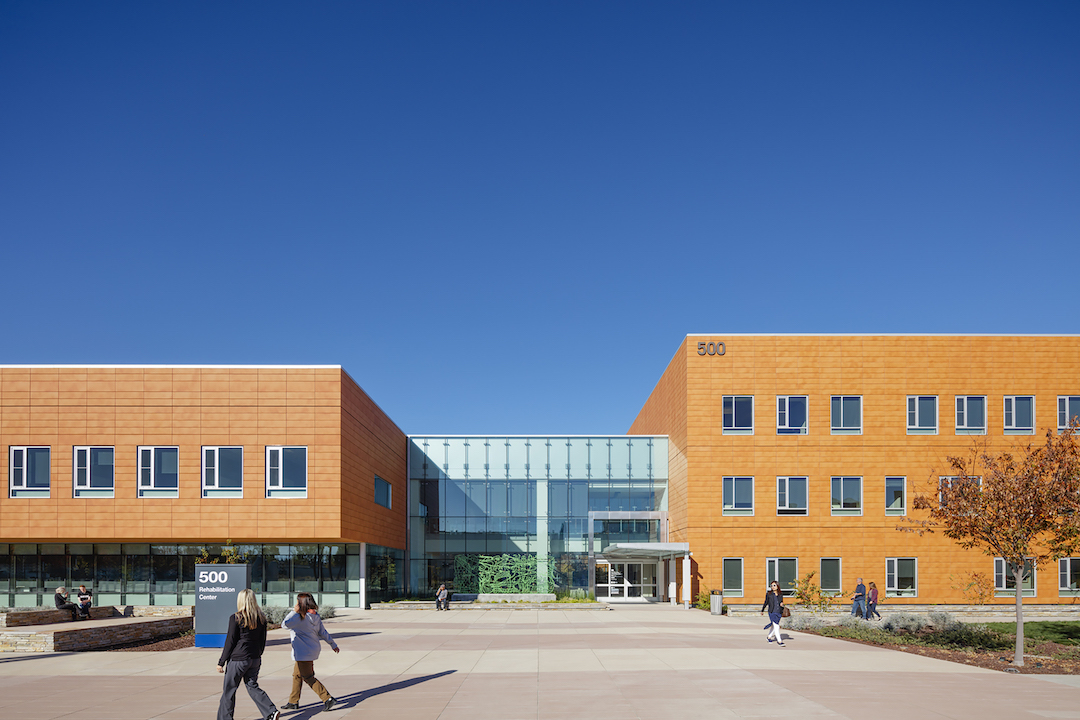 Photo: Tim Griffith and Kyle Jeffers, courtesy AIA
Photo: Tim Griffith and Kyle Jeffers, courtesy AIA
Project attributes
Construction cost or anticipated construction cost: $600 million
Building area or anticipated building area: 174,000 sq ft
Construction start date or anticipated construction start date: October 2011
Substantial completion date or anticipated substantial completion date: November 2020 (estimated)
Project team
Acoustics: Charles M. Salter Associates, Inc.
Engineer - Civil: BKF Engineers
Engineer - Electrical: Guttmann & Blaevoet | Cammisa + Wipf
Engineer - Mechanical : Capital Engineering Consultants, Inc.
Engineer - Plumbing: Capital Engineering Consultants, Inc.
Engineer - Structural: Degenkolb Engineers
Geotechnical: Treadwell & Rollo, a Langan Company
Interiors: SmithGroup
Landscape Architects: Keller Mitchell & Co. | Royston Hanamoto Alley & Abey
Planning: SmithGroup
Signage: Kate Keating Associates
Technology: TEECOM
Category C - Renovations/Remodeled: Primarily built within existing hospital or clinical space or adaptive reuse of an existing building to a healthcare use.
Studio Dental II, San Francisco | Montalba Architects
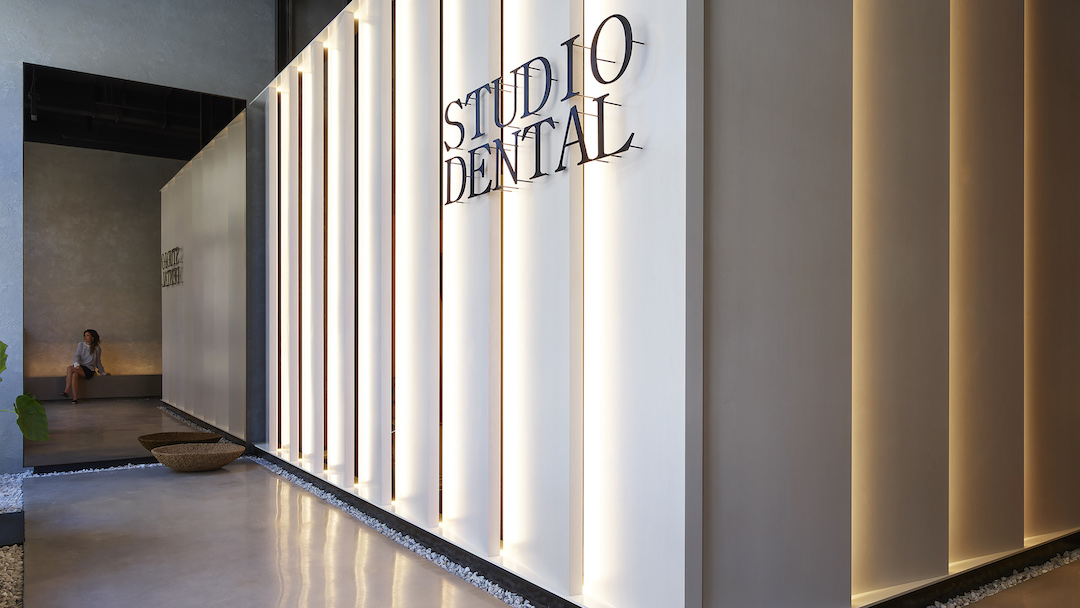 Photo: Kevin Scott, courtesy AIA
Photo: Kevin Scott, courtesy AIA
Situated within a rapidly developing neighborhood in San Francisco’s financial district, the dentists’ brick and mortar location is defined by a modern aesthetic, while honoring the historic elements of the base building. This creates a transcendent environment that feels gallery-like and serene. The design centers on a conceptual ‘lantern’ within the dark building core, which communicates a sense of scale, luminescence, and transparency, and envelopes the series of operatories within. The lantern wall panels not only light up the dark building shell, but also glow through the storefront to brighten the street. The lantern provides patient privacy while engaging with the pedestrian street front, in an effort to energize the surrounding community.
In place of a common waiting room, a park-like bench extends the length of the space. Wood trellises provide separation between the bench and operatory rooms without closing off the space. Moments of material contrast are introduced between the rough shell walls, smoked mirror panels, and central colonnade of maple monoliths, which serve as functional storage and define the entry to each private patient room.
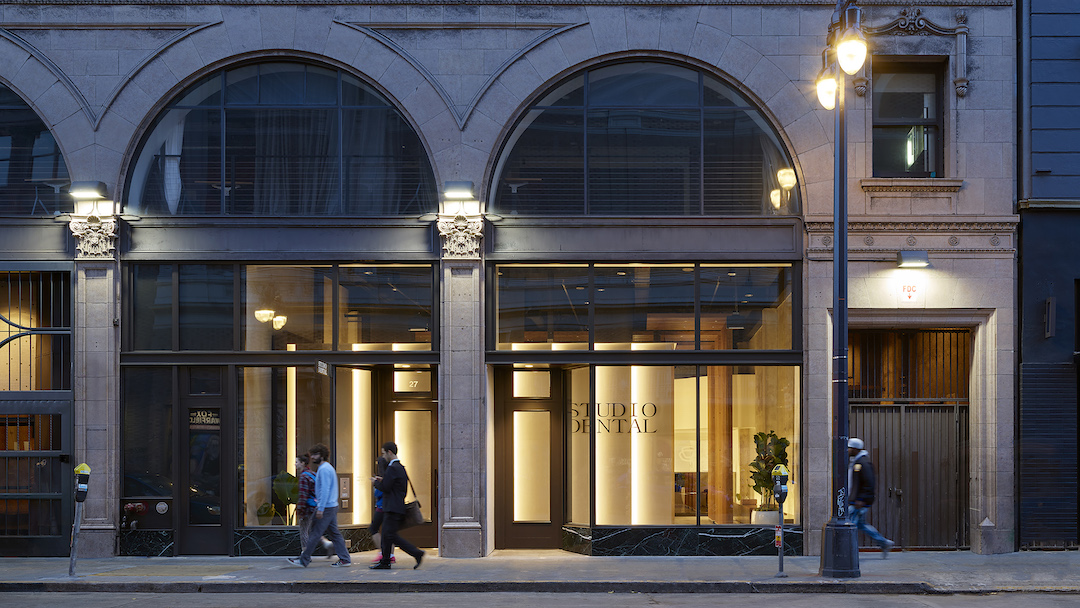 Photo: Kevin Scott, courtesy AIA
Photo: Kevin Scott, courtesy AIA
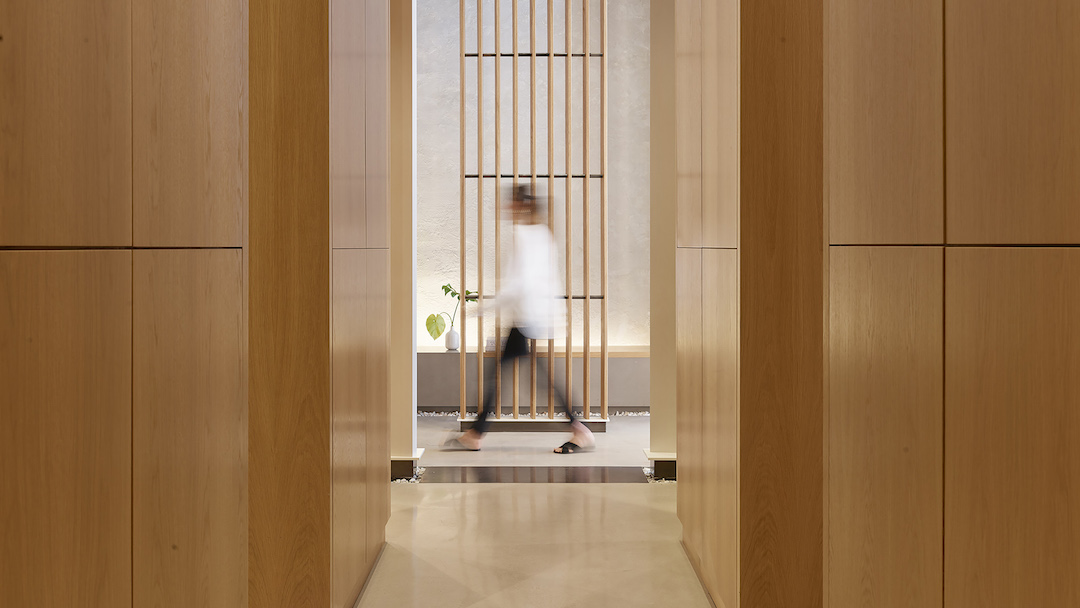 Photo: Kevin Scott, courtesy AIA
Photo: Kevin Scott, courtesy AIA
Project attributes
Construction cost or anticipated construction cost: Withheld per Client's request
Building area or anticipated building area: 1,400 sq ft
Construction start date or anticipated construction start date: November 2016
Substantial completion date or anticipated substantial completion date: June 2017
Project team
Engineer - MEP: ACIES Engineering
Engineer - Structural: Julia Y. Chen Design Inc.
General Contractor: Build Group
Lighting: Sean O'Connor
Lighting Fabricator - Millwork: Pacific Westline, Inc.
READ MORE ABOUT THE 2019 Healthcare Design Awards
Related Stories
Urban Planning | Apr 12, 2023
Watch: Trends in urban design for 2023, with James Corner Field Operations
Isabel Castilla, a Principal Designer with the landscape architecture firm James Corner Field Operations, discusses recent changes in clients' priorities about urban design, with a focus on her firm's recent projects.
Market Data | Apr 11, 2023
Construction crane count reaches all-time high in Q1 2023
Toronto, Seattle, Los Angeles, and Denver top the list of U.S/Canadian cities with the greatest number of fixed cranes on construction sites, according to Rider Levett Bucknall's RLB Crane Index for North America for Q1 2023.
Contractors | Apr 10, 2023
What makes prefabrication work? Factors every construction project should consider
There are many factors requiring careful consideration when determining whether a project is a good fit for prefabrication. JE Dunn’s Brian Burkett breaks down the most important considerations.
Architects | Apr 6, 2023
New tool from Perkins&Will will make public health data more accessible to designers and architects
Called PRECEDE, the dashboard is an open-source tool developed by Perkins&Will that draws on federal data to identify and assess community health priorities within the U.S. by location. The firm was recently awarded a $30,000 ASID Foundation Grant to enhance the tool.
Sustainability | Apr 4, 2023
NIBS report: Decarbonizing the U.S. building sector will require massive, coordinated effort
Decarbonizing the building sector will require a massive, strategic, and coordinated effort by the public and private sectors, according to a report by the National Institute of Building Sciences (NIBS).
Healthcare Facilities | Mar 26, 2023
UC Davis Health opens new eye institute building for eye care, research, and training
UC Davis Health recently marked the opening of the new Ernest E. Tschannen Eye Institute Building and the expansion of the Ambulatory Care Center (ACC). Located in Sacramento, Calif., the Eye Center provides eye care, vision research, and training for specialists and investigators. With the new building, the Eye Center’s vision scientists can increase capacity for clinical trials by 50%.
Healthcare Facilities | Mar 25, 2023
California medical center breaks ground on behavioral health facility for both adults and children
In San Jose, Calif., Santa Clara Valley Medical Center (SCVMC) has broken ground on a new behavioral health facility: the Child, Adolescent, and Adult Behavioral Health Services Center. Designed by HGA, the center will bring together under one roof Santa Clara County’s behavioral health offerings, including Emergency Psychiatric Services and Urgent Care.
Healthcare Facilities | Mar 22, 2023
New Jersey’s new surgical tower features state’s first intraoperative MRI system
Hackensack (N.J.) University Medical Center recently opened its 530,000-sf Helena Theurer Pavilion, a nine-story surgical and intensive care tower designed by RSC Architects and Page. The county’s first hospital, Hackensack University Medical Center, a 781-bed nonprofit teaching and research hospital, was founded in 1888.
Project + Process Innovation | Mar 22, 2023
Onsite prefabrication for healthcare construction: It's more than a process, it's a partnership
Prefabrication can help project teams navigate an uncertain market. GBBN's Mickey LeRoy, AIA, ACHA, LEED AP, explains the difference between onsite and offsite prefabrication methods for healthcare construction projects.
Modular Building | Mar 20, 2023
3 ways prefabrication doubles as a sustainability strategy
Corie Baker, AIA, shares three modular Gresham Smith projects that found sustainability benefits from the use of prefabrication.


